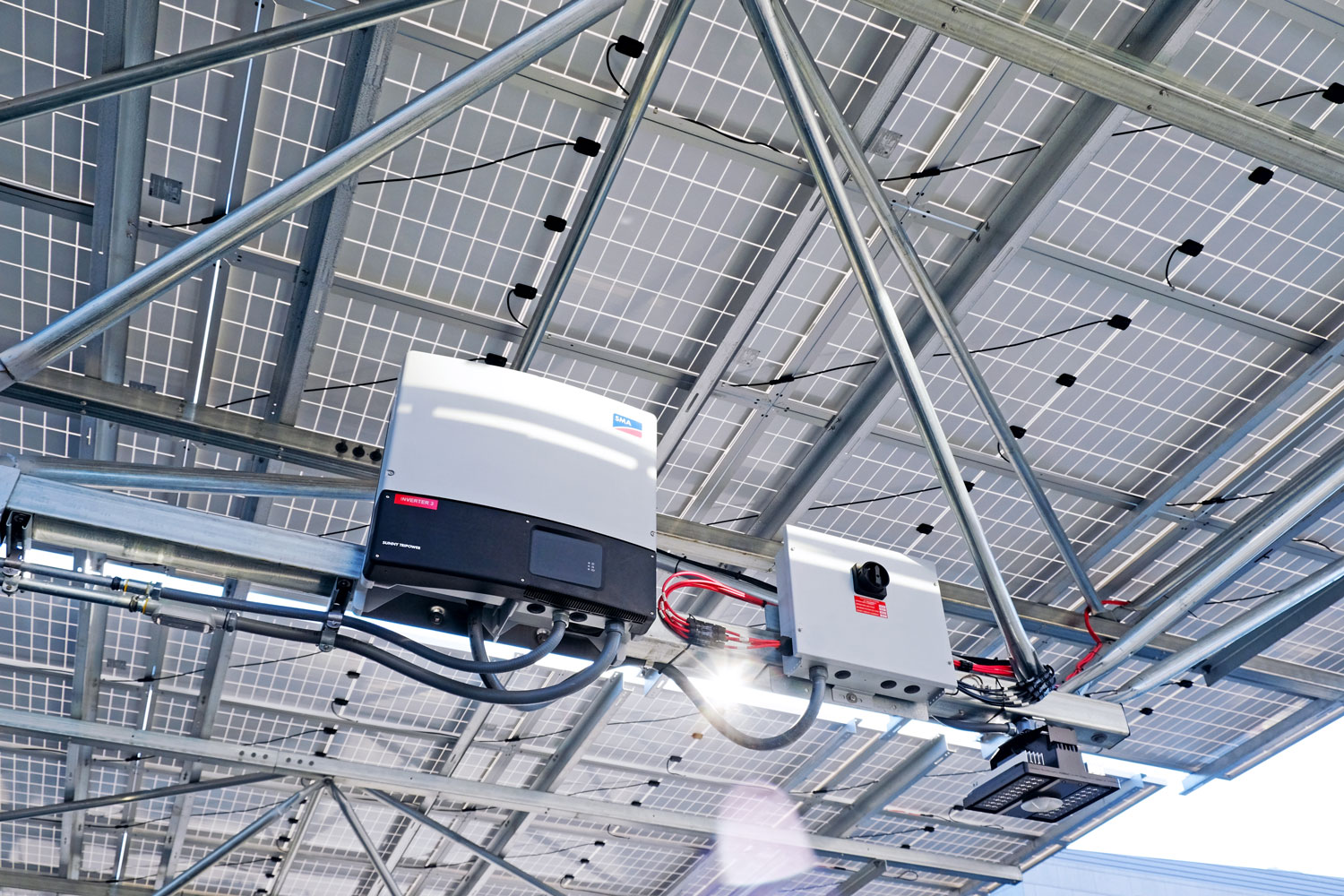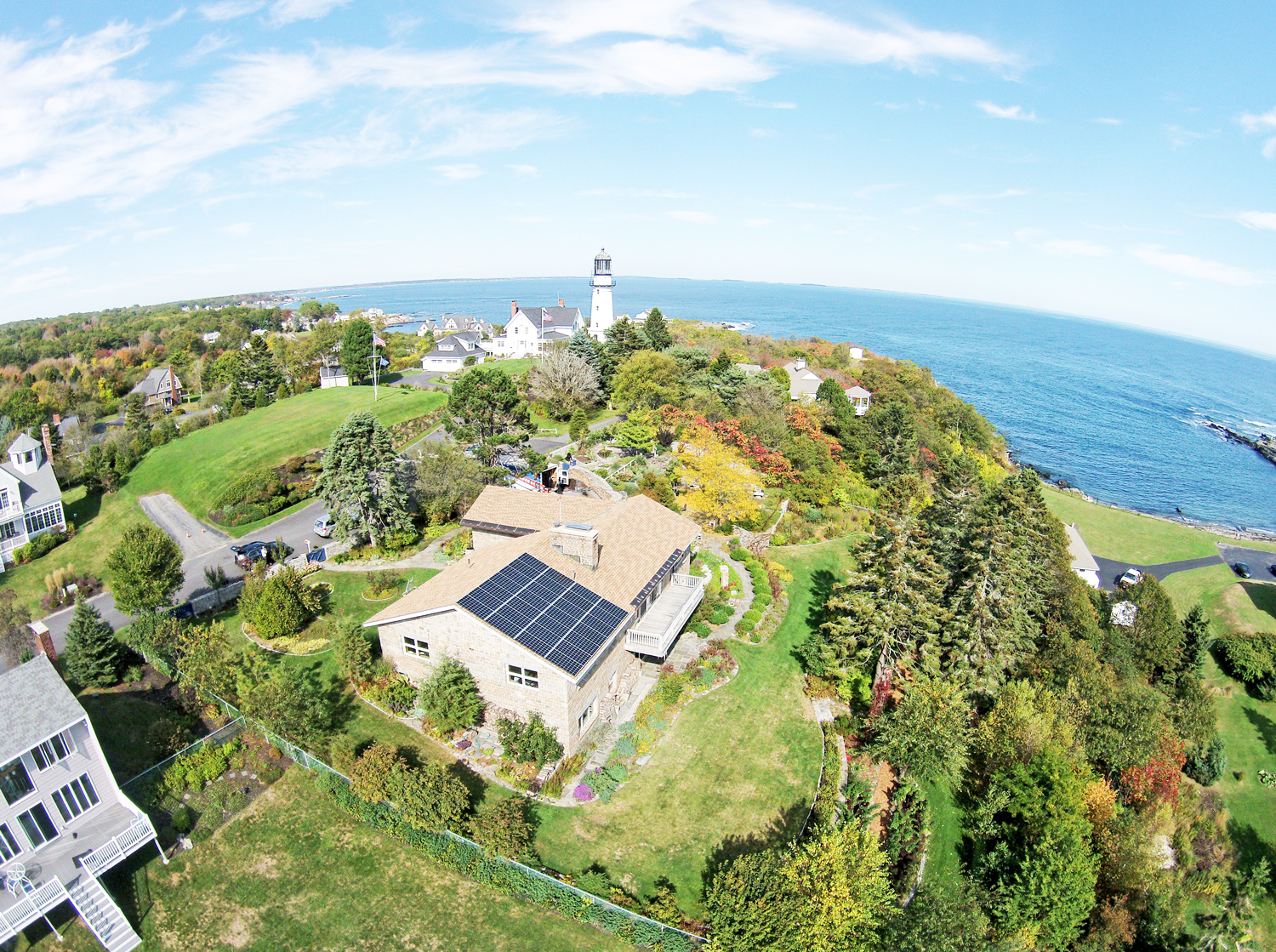An Electrifying Concept that will Save the World
It won’t be long until we power everything in the world with wind, water and sun. This is strategic electrification, and its game-changing disruptions will help us stop carbon pollution and increase energy efficiency. The sooner we adopt this strategy of progress, the sooner we see the benefits.
The Fore Street Garage solar canopy in Portland, ME has 7 SMA Sunny Tripower inverters flying high. Inverters convert DC from the solar panels to AC for usage in homes and offices.
There’s hundreds of years’ worth of coal underground for us to burn, but it’s going to stay there. We no longer need it to make electricity.
Historically, grid operators have created electricity with problematic resources like coal, natural gas, or nuclear energy – but due to the emergence of renewables and electrification, the nature of the grid has begun to change.
Electricity is becoming cleaner at an impressive rate, and the time is right to electrify everything. Whether it comes from residential solar systems or our growing asset of utility-scale renewable energy systems, clean power will flow into an increasingly electrified world of devices.
Green Pastures
The beauty of strategic electrification is that as electricity becomes cleaner, so will everything we do with it. As utilities invest more into renewable energy infrastructure, electricity will steadily use less fossil fuel per kilowatt-hour of energy produced. If we power our grid with 100% renewable energy, we can nearly eliminate greenhouse gas emissions altogether by electrifying everything under the sun.
To bolster the penetration of renewables on our electric grid, and to see the biggest benefit of electrification, we need to electrify space heating, water heating, and, especially, transportation. With today’s heat pumps, heat pump water heaters, and next-generation electric cars, we already have the solutions.
The Flexibility to Give
Not only will these devices be cleaner than their predecessors, they will also be more flexible, smarter. The modern grid will become smarter, too, and increased flexibility in generation, interconnection, storage and demand response around the grid will meet the challenges of a more electrified world.
The Brunswick Landing microgrid in Maine will demonstrate the grid of the future, accomplished by embracing new technologies and attracting renewable energy businesses who can use the microgrid to develop their businesses and beta test new technology.
The variability of certain renewable resources like wind, solar or tidal energy presents a challenge to generating power smoothly at all hours, but properly mixing those different resources from around the grid will create the flexibility needed to respond to changes in demand and supply.
Though it is also possible to import electricity across network borders to help stabilize the grid, flexible interconnection with the growing amount of residential solar electricity in our own network is the better way to meet that need. Decentralizing our grid in this way allows for power to be consumed where it is produced, lowering rates for everybody.
Battery storage is often heralded as the best solution to variable power production, and it will indeed play a part, but it is a higher priority to integrate and balance available renewable energy resources. That said, batteries are an obvious way to help, especially as their costs drop and capacities grow.
Flexi-Watts
Load flexibility, or demand response, will have a critical part of balancing a renewable energy grid, as it is the most cost effective method. Demand response programs existed in the past to balance supply and demand by prompting large, industrial customers to lower their usage at certain times of day during periods of high power prices or when the reliability of the grid was threatened.
The Fore Street Garage in Portland is the first such solar canopy in Maine, and produces a quarter of a neighboring hotels electricity.
Now, the world of strategic electrification has opened an unlimited number of possibilities for demand response – the internet has rendered it no harder to turn off 1,000 water heaters than it is to turn off a paper mill. Furthermore, a smart heat pump water heater will run when there is excess solar on the grid, but not when demand is high – basically performing the same function as a battery, but at maybe 2% of the cost, since all we buy is a switch telling it to run or not.
Our devices are increasingly able to communicate across the grid and operate only when most efficient. The “flexi-watts” they run on when there’s a surplus of renewable power will enable us to keep making the grid smarter. The grid is evolving beyond supplying electricity, into a network that makes the most of its distributed energy resources.
Much like the internet changed the way we participate with our media, it’s now changing the way we interact with our budding smart grid.
A Virtuous Cycle
Traditional energy efficiency metrics, that have been improving our electronics for years now, overlook the wide range of emissions efficiencies from electricity generation. Kilowatt-hours from different sources can have vastly different emissions profiles, ranging from as much as 2 lbs. of CO2 to almost nothing.
We need to improve emissions efficiency along with energy efficiency in our shift to an environmentally beneficial grid, by expanding renewable energy.
The worthy effort to reduce usage of dirty electricity through energy efficiency programs has been the focus of our policy and incentives, but when we consider the improved emissions of renewable energy, we see that it’s better to increase the amount of electricity we use when it comes from a clean source.
Pairing strategic electrification with a cleaner, smarter grid creates a beneficial exchange that inspires more electrification and greener electricity in a virtuous cycle.
On the Verge
We stand on the verge of massive opportunities through strategic electrification, but we must recognize that those opportunities won’t be achieved through an indiscriminate focus on reducing kilowatt-hours. It’s more important we clean up our kilowatt-hours, and use them.
If regulators and legislators fail to recognize the strengths of renewables and strategic electrification in a timely manner, there could be long-term negative impacts for us and the environment. Instead they can foster long-term growth, unlocking significant economic and societal benefits by getting to work on incentives and initiatives.
The sooner this is acted upon the sooner we can see all the ways a smarter, more flexible grid can increase reliability, security, sustainability, and open new opportunities for services and business. Coal was just the beginning of our electricity – and the Stone Age didn’t end because we ran out of stones.
This home in Maine has solar panels paired with a Pika Islanding Inverter and Harbor smart battery and can power critical loads during grid outage.





